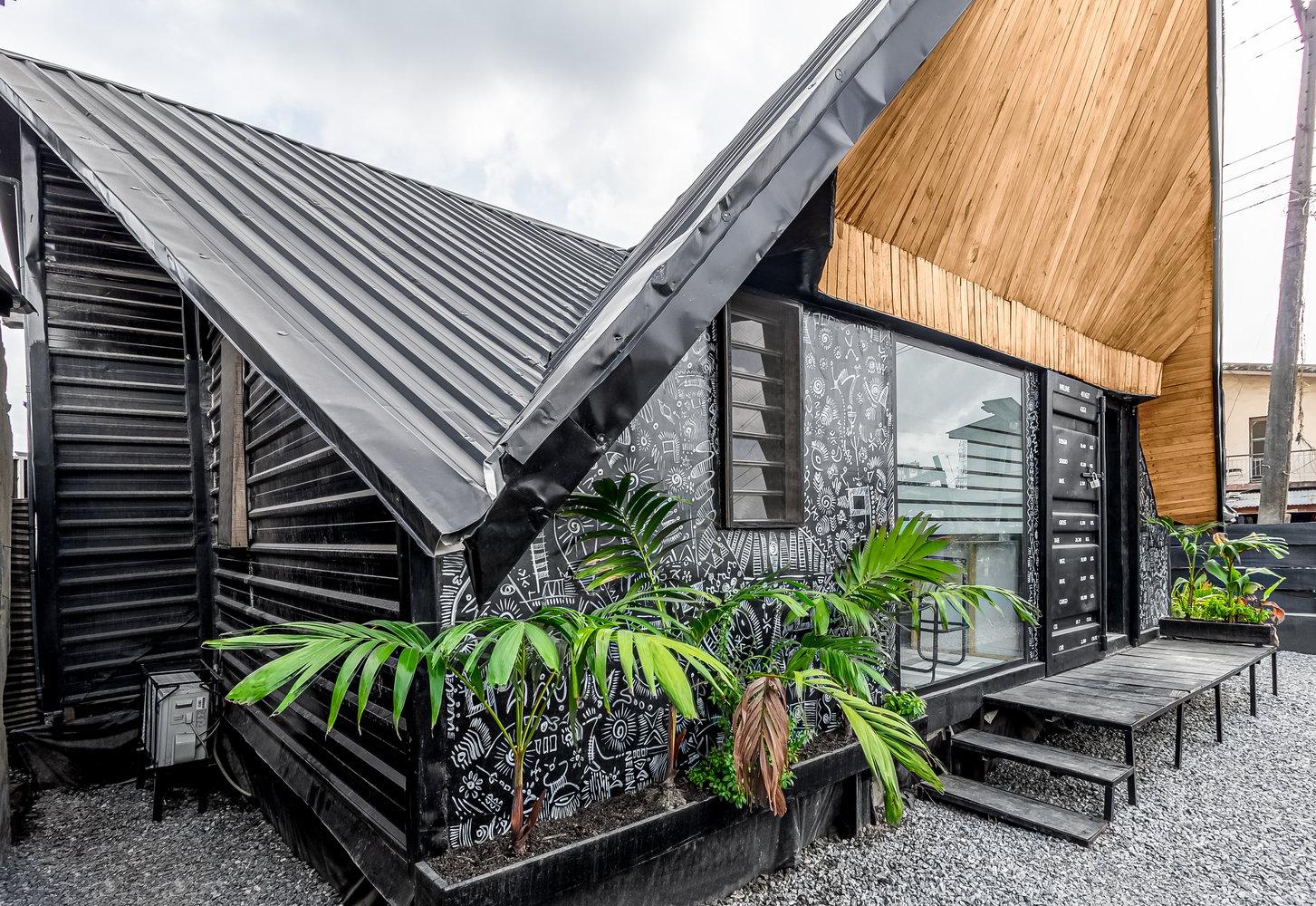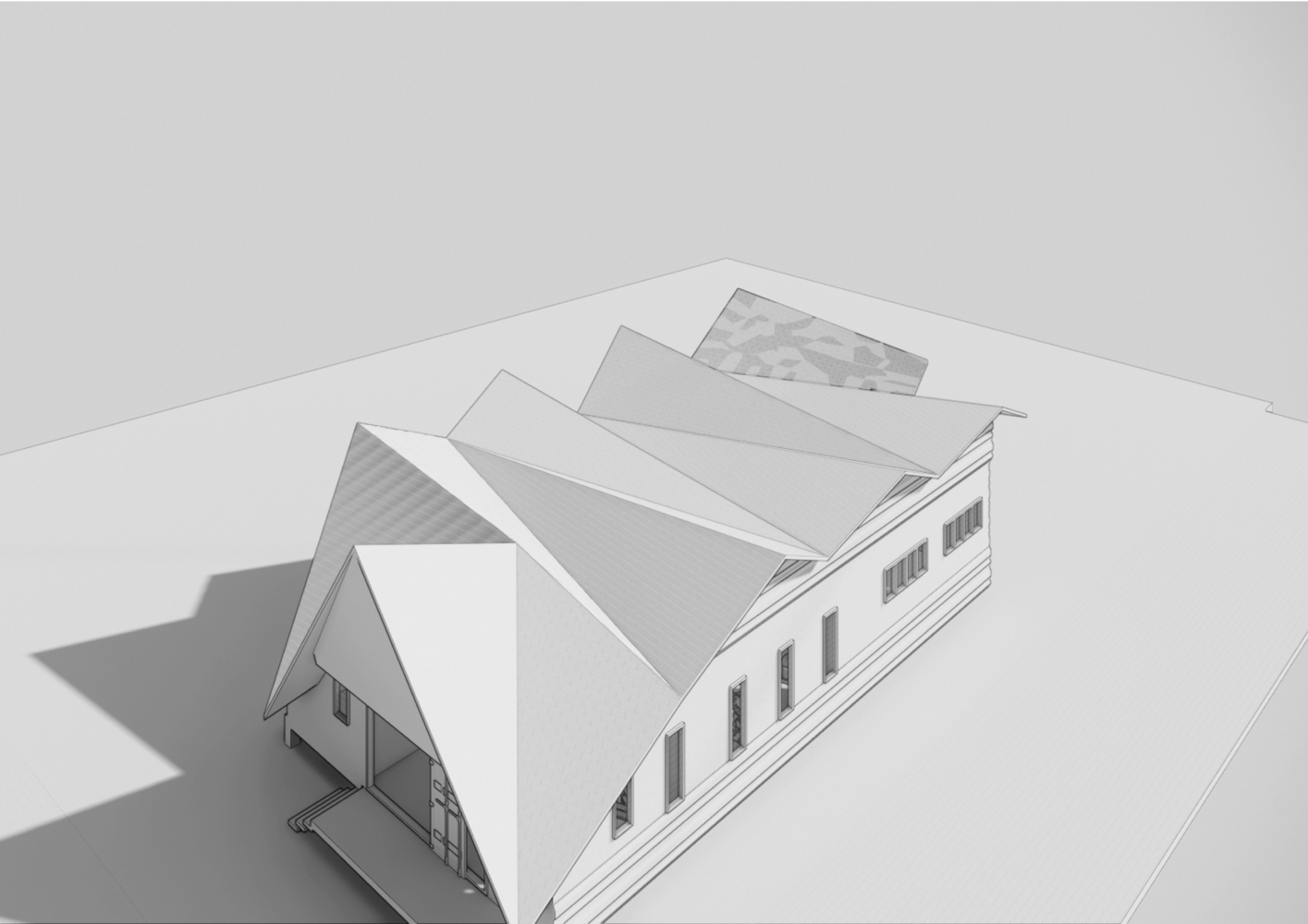Studio Inkline’s Origami Architecture Suggests a Stunning Alternative to the Norm
 Inkline Design Studio || Mujib Ojeifo Photography
Inkline Design Studio || Mujib Ojeifo Photography
A drone shot of Leigh Street in the Yaba area of Lagos, Nigeria will make for stunning viewing for any enthusiast of architecture. Set on a landmass of 233sqm in the area, Studio Inkline; a creative composition of Niyi Opebiyi and his team at Inkline Design Studio stands as a visual artistic contrast to the generic-looking structures that surround it.
Evocative of the Origami, a paper-folding technique that was founded in Japan as far back as the nineteenth century, Studio Inkline is an architectural masterpiece that carefully incorporates Japanese aesthetics and style with local materials and methods. The building, with its impressive undulating black roof and mural infused façade, houses the Inkline Design Studio. Largely built with wood and clad in cement, the structure is pleasingly curvilinear, looks lightweight and curiously, fits spectacularly into a topography it appears to dictate for itself.
Studio Inkline is conceived as an example of Vernacular Architecture with the roof being its most conspicuous feature. Perhaps the crux of the design concept too, the roof derives its geometry from the origami technique. The roof is an arching blanket shielding the structure and dictating its form, rhythm, and aesthetics. Made predominantly of wood, the roof is formed of triangular nodes enhancing a level of drought resistance and collecting water for irrigation. The shape also opens in a triangular embrace at its entrance welcoming visitors to the building’s showroom.
For the walls, cement is used to provide a canvas for the murals. Rather than deploying the usual wall paintings, the wall is painted black to match the roof while the murals are hand-drawn symbols resembling the Adinkra art form. This infuses personality into the façade. It introduces a language that balances out the structure’s foreign design form with a local art form. The fence is made of wood and woven metal wires. The wood is reinforced using the Japanese waterproof technique, Shou-Sugi Ban; a gorgeous method that involves charring a wood surface till it becomes a deep charcoal-black.
 Inkline Design Studio || Mujib Ojeifo Photography
Inkline Design Studio || Mujib Ojeifo Photography
The design concept with the roof as its dictating character also stylistically influenced the building interior. The building’s ceiling is designed in tangent with the undulating shape of the roof. As a studio that designs and manufactures furniture and other products, it must have been an interesting test to infuse the character of the exterior into the interior furnishings. The design idea is further given credibility by the shape and style of the interior design and furnishing. Tables and chairs are unconventional in form and fittings are done based on a potent understanding of the space architecture.
 Inkline Design Studio || Mujib Ojeifo Photography
Inkline Design Studio || Mujib Ojeifo Photography
With adaptable features and a foreign traditional back story, Studio Inkline is a structure that adopts a design concept that is non-indigenous and yet manages to translate it into an easily understood architectural language. The design optimizes local materials and expertise to create an innovative structure that suggests an alternative to the norm. Perhaps most interesting is the fact that this design gives meaning to one of the most superficial components of a building. It is not every day you see a structure designed to complement the roof now- is it?




